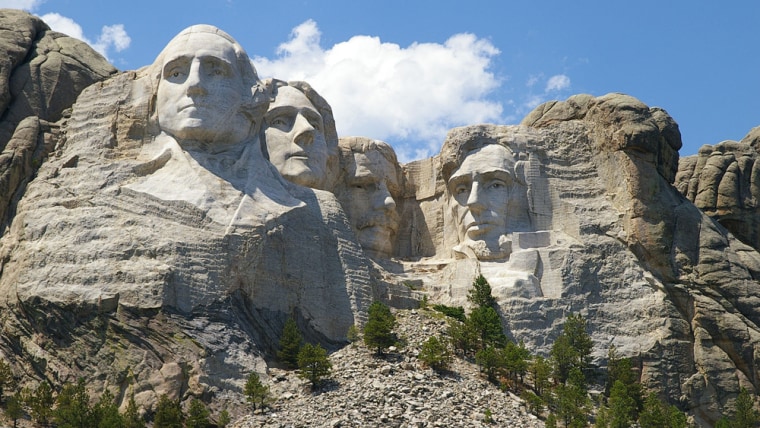Every well-mannered traveler has probably heard some version of that old adage about not discussing sex, money or religion on a first date, in polite company or at dinner with your potential in-laws. In this presidential election season, add politics to that list.
As election day draws near, it may be difficult to avoid being drawn into a heated political discussion. Go ahead — voice your opinion. But if the conversation gets too testy, try gently changing the subject by bringing up William Taft’s pet cow, John Quincy Adams’ penchant for swimming nude or some other bit of intriguing trivia you picked up while exploring a presidential museum, library, home or park.
Here are a few to get you started:
Homes and hangouts of commanders in chief
There are thousands of presidential “places” around the country. Sites range from homes where former presidents were born and inns where George Washington allegedly spent a night to the state-sponsored, very theatrical (some say over-the-top) Abraham Lincoln Presidential Library and Museum in Springfield, Ill., where an eerie holographic image of the gangly, bearded president appears regularly for guests.
In Huntington, Ind., there’s even a museum dedicated to those who have held the job of our country’s second-in-command. Located in the hometown of Dan Quayle, the nation’s 44th vice president, the United States Vice Presidential Museum is filled with portraits, artifacts and ephemera relating to the job John Adams, the country’s first vice president, called “the most insignificant office that ever the invention of man contrived or his imagination conceived.” Similarly, John Garner, the nation’s 32nd vice president, called the job “not worth a pitcher of spit.”
There are also a dozen (so far) “official” Presidential Libraries and Museums scattered around the country. These are overseen by the National Archives and Records Administration and are home to millions of historic documents, artifacts and gifts associated with U.S. presidents, starting with President Herbert Hoover.
For example, the Franklin D. Roosevelt Presidential Library and Museum in Hyde Park, N.Y., displays the desk Roosevelt used in the White House, complete with the gifts, mementos, books and cigarettes that were on the desk when he last visited the Oval Office on March 29, 1945. On exhibit at the Lyndon Baines Johnson Library and Museum in Austin, Texas, is the mint condition 1910 Model T Ford given to the president by Henry Ford, II, along with a nearly full-scale replica of the Oval Office just as it looked during Johnson's presidency and an almost-too-real, talking and gesturing robotic LBJ figure telling stories. And at theRichard Nixon Presidential Library and Museumin Yorba Linda, Calif.,visitorscan seethe telephone President Nixon used to call Neil Armstrong and Buzz Aldrin on the moon and the six-ton helicopter known as Marine One that was used by Presidents Kennedy, Johnson, Nixon and Ford. (The Nixon Library also offers online access to many hours of the secretly recorded “Nixon Tapes.”)
Herbert Hoover, Franklin D. Roosevelt, Harry S. Truman, Dwight D. Eisenhower, Richard M. Nixon, Gerald R. Ford and Ronald Reagan are buried on the grounds of their respective presidential libraries and museums.
And all those presidents, except Ronald Reagan and Gerald Ford, whose wives are still alive, are buried alongside their wives. Franklin D. Roosevelt has his favorite dog, Fala, buried beside him as well.
Cows, alligators, cats, canaries and other presidential pets
Speaking of presidential pets, who can forget that Lyndon Johnson had beagles named Him and Her? Or that Richard Nixon had that cocker spaniel named Checkers? But did you know that John Quincy Adams had an alligator? That Thomas Jefferson had a mockingbird? And that Martin Van Buren had a pair of tigers that Congress advised him to send to the zoo?
You can learn about these pets and those belonging to every president since George Washington at Claire McLean’s Presidential Pet Museum in Williamsburg, Va. The 500-piece collection includes portraits of Ronald Reagan’s dog, Lucky, and George Bush’s dog, Miss Beazley. Interestingly, fur from the two pooches is included in the actual paintings. Other exhibits include pictures of presidents with their pets, sculptures of presidential pets and even the bell worn around the neck of Pauline Wayne, the cow President Howard Taft allowed to graze on the White House lawn.
Big-headed presidents
McLean’s Presidential Pet Museum is part of a Williamsburg attraction called Presidents Park. There, visitors can walk along a path dotted with giant (18-20 foot tall) cement busts of every United States president. Biographical panels along the way offer presidential trivia such as: “Warren Harding had the largest feet of any president. He wore size 14 shoes,” “Calvin Coolidge refused to use the telephone while in office,” and “JFK was the first president to hold a press conference on television.”
All the busts were made by David Adickes. He’s the well-known artist who created a duplicate set of big presidential heads for another Presidents Park in the Black Hills of South Dakota. That attraction is just 50 miles down the road from Mount Rushmore, the national memorial where you can see the massive rock faces of George Washington, Thomas Jefferson, Theodore Roosevelt and Abraham Lincoln.
Dave Olmsted, the manager at Presidents Park in Lead, S.D., says that while the park is intended to be a purely historical, non-partisan, educational attraction, “it is a politically-charged year and sometimes we do get someone voicing an opinion about a president.” That’s just fine with Olmsted, but he does counsel his park employees not to engage in political discussions with visitors. Instead he tells them it’s better to “stay neutral because you just don’t know who you’re dealing with.”
While park employees haven’t had to scrub away any political graffiti, there have been a few e-mail requests to have President Clinton’s bust removed from the park. Olmsted says that won’t happen “because we can’t change history.”
Harriet Baskas writes msnbc.com's popular weekly column, The Well-Mannered Traveler. She is the author of the , a contributor to National Public Radio and a columnist for USATODAY.com.
